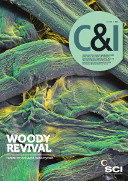Three-D printing of ears, noses and damaged cartilage in the knees may soon be easier and cheaper following the launch of a ‘portable and affordable’ 3D printer for fixing damaged human cartilage. Launched in November 2015, the Inkredible printer costs $5000 and is specifically designed for use with a special bioink – CELLINK - made from a patient’s own cells, according to its inventor Paul Gatenholm of the Wallenberg Wood Science Center in Sweden, speaking at the ACS meeting in San Diego in March 2016.
Now under review by regulators for use in the clinic, it could allow surgeons to reconstruct printed living tissues in the operating theatre.
CELLINK’s unique ‘shear thinning properties’ mean it can be used to print living soft tissue with extremely high fidelity or detail, Gatenholm says. Cellulose nanofibrils in the bioink formulation orient themselves in the flow during printing and recover their viscosity afterwards, he explains – also creating tiny gaps between the printed cells that allow for the exchange of nutrients and oxygen without which they would otherwise die.
Other CELLINK ingredients include polysaccharides from brown algae and human chondrocytes – the cells that build up cartilage.
Using this bioink, Gatenholm and coworkers printed living cells in the shape of an ear – and also printed and implanted samples of human nose cells in mice. Stem cells from bone marrow boosted cell growth and cartilage production, the researchers report – along with the growth of new blood vessels or vasculature.
The first clinical application will likely be to print ears, Gatenholm believes; currently surgeons have to reconstruct ears by carving a piece section of rib bone extracted from patients.
Over 30 Inkredible printers have been sold to research groups since it was launched and Gatenholm is confident of obtaining regulatory approval for use in the clinic relatively quickly as the bioink ingredients are already used for other medical applications.
Other 3D bioprinters in the news, meanwhile, include ITOP – an integrated tissue-organ printer (ITOP) that its developers claim can fabricate stable, human-scale tissue constructs of any shape. Reported in February 2016 by researchers including Anthony Atala at Wake Forest Institute for Regenerative Medicine in North Carolina, US, ITOP operates by printing cell-laden hydrogels to produce the desired tissue shapes using using clinical imaging data to computer model the anatomical defect and translating this into a program to control the motions of the printer nozzles (Nature Biotechnology, 2016, 34, 312).





